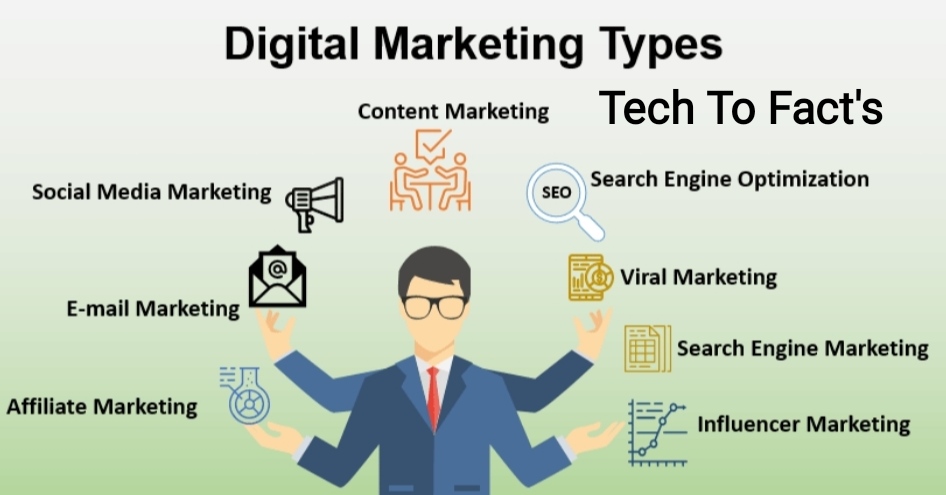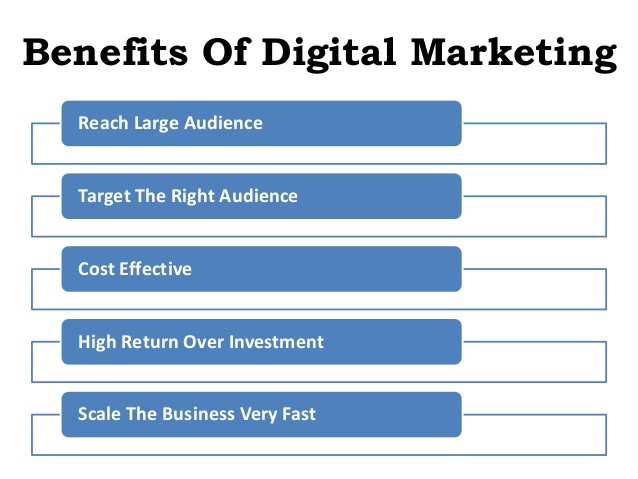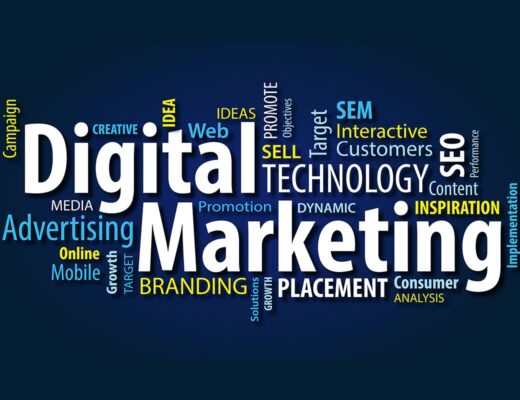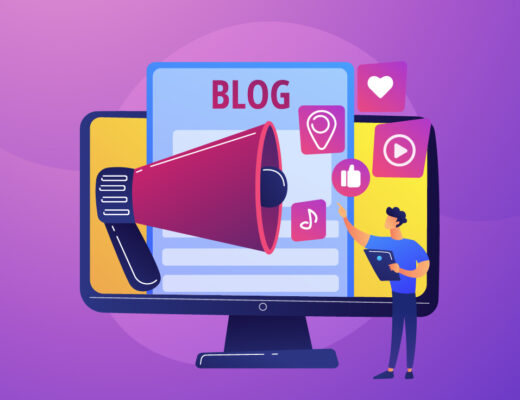What is Digital Marketing?

Digital marketing, often known as online marketing, is indeed the promotion of businesses through the internet and other kinds of digital communication in order to engage with potential clients. As a marketing channel, this comprises not only mail, social networks, and web-based marketing, but also textual and multimedia messages.
Any marketing that makes use of electronic devices can be used by marketing professionals to deliver promotional messaging and track its effectiveness throughout the consumer journey. Digital marketing Dubai refers to marketing initiatives that display on a computer, smartphone, tablet, or another gadget in practice. Online video, display advertising, search engine marketing, sponsored social ads, and social media posts are just a few examples. Traditional marketing methods such as glossy magazines, billboards, and mailings are frequently compared to digital marketing.
Getting to Know Digital Marketing
Digital marketing is interactive and targets a certain section of the customer base. Digital marketing, which includes search result advertisements, email ads, and sponsored tweets — anything that combines marketing with consumer feedback or a two-way connection between the business and the client – is on the rise.
Digital marketing is not the same as internet marketing. Digital marketing can take occur on mobile devices, on a station platform, in a video game, or through a smartphone app, whereas Internet marketing occurs primarily on the Internet.
Advertisers are often referred to as sources in digital marketing, whereas members of targeted ads are generally referred to as receivers. Receivers who are very specific and well-defined are frequently the targets of sources.
What are the various types of digital marketing?

The eight main types of digital marketing are social media marketing, search engine optimization, content marketing, pay-per-click, email marketing, marketing analytics, mobile marketing, and affiliate marketing.
- SEO stands for “search engine optimization” (SEO)
The goal of SEO Dubai is to help a company’s website rank better in Search engine results, resulting in increased search engine traffic. To do just that, SEO marketers search for terms and expressions that people use while searching for information on the internet and include them in their own material. According to Moz’s “Beginners Guide to SEO,” SEO includes a variety of factors, including the text on your web pages, how other sites link to you on the web, and how your website is built. According to Salary.com, an SEO professional can earn roughly $70,058 per year.
So, what are some strategies for improving a website’s SEO? It’s vital to note that one of the challenges of SEO is that the answers to these questions are always dependent on the Search engine and most recent algorithm. Here are a few of the most critical factors for SEO strategists and advertisers, in general, to know about how SEO works today:
- Content indexing – It’s critical to make it easy for search engines to understand what your site’s content is by including alt text for pictures and text transcripts for video and audio.
- Good link structure – In an attempt to discover all of your material, search results must be enabled to “crawl” the site structure. An SEO specialist can style links, URLs, and sitemaps in a variety of ways to make them more accessible to site crawlers.
- Keywords and targeting keywords – One of the essential building blocks of SEO is properly employing your keywords – i.e. the query terms you wish your site to be found for – in your content and headers. The strategy of “stuffing” your content with just as many keywords and keyword variants as feasible is no longer recommended. Writing high-quality material with keywords inside the headers and a few times throughout the crawlable page content is now regarded as best practice, and will continue to be so in the future.
- Pay-per-click (PPC)
Pay-per-click refers to paid advertisements and paid search engine results. This is a relatively short-term form of internet marketing, which means the ad will disappear once you stop paying. PPC, like SEO, is a method to boost a business’s web search traffic.
Advertisements that appear at the top and side of a page of the search results, ads that appear when browsing the web, commercials that appear before YouTube videos, and ads All of the advertisements that display in mobile apps are instances of pay-per-click advertising.
Another element that distinguishes pay-per-click from SEO is that you can only pay for results. In a conventional PPC arrangement, such as an Adwords campaign, you will only pay when someone clicks on your ad and arrives at your website Pay-per-click advertising allows you to spend virtually any amount of money.
- Social Media Marketing
This refers to everything a business can do on social media. Despite the fact that practically everyone is aware of social media, advertisers must employ it in a strategic and integrated manner. Much more than simply posting on social networking sites and commenting on things is involved in social media marketing and Grow tremendously with Social Media Marketing Services.
Efforts must be organized and consistent instead of an afterthought if they are to be effective. There are several online methods available to automate and plan social media postings to help keep messages consistent, but marketers should only use automation as a tool, not as a “set it and forget it” solution. If there is no genuinity behind the posts, customers will very easily figure it out.
- Content Marketing
To raise brand awareness, content marketing employs narrative and information sharing. The ultimate goal is for the reader to take a step toward becoming a customer, including seeking additional information, joining an email list, or purchasing something. Blog posts, fact sheets and e-books, digital films, podcasts, and a variety of other resources are all instances of “content.” This should, in general, first and mainly give value to the customer, rather than simply market the company or try to sell something. Content marketing is about developing a long-term, trustworthy relationship with the customer that can lead to multiple sales over time rather than just one.
- Email Marketing
Despite the rise of social media, smartphone apps, and other platforms, email remains one of the most powerful marketing, according to Rogers. It can be utilized as a part of the content strategy to provide value to the customer and eventually convert them into paying customers. As per the American Marketing Association, email marketing professionals are competent at not just creating compelling messages, but also understanding appropriate audience outreach and monitoring consumer interactions and data, as well as making strategic decisions based on that data.
Marketers can do a lot to make their emails more engaging to users and much more likely to be opened. These are some of them:
- Instill a feeling of urgency inside your customers.
- Allow recipients to set their own preferences
- Choose Personalizing your email
- Mobile Marketing
This type of digital advertising focuses on contacting your target audience via smartphone or tablet. Marketers can customize offers or special content based on a customer’s location or time, such as when they enter a store or attend an event.
- Marketing Analytics
One of the key advantages of digital marketing is that it is very easily able to be tracked and measurable. Coupons as well as other direct marketing offers used to be the only marketing products that could be tracked. When a customer utilized the discount, you knew the word had been received. Today, analytics allow marketers to watch user behavior down to the smallest detail: how many times they click on a link, how long they stay on a website, how often they open emails, and so on. The huge amount of information accessible about digital marketing efficiency, on the other hand, might feel like drinking from a hosepipe, and managers must be able to comprehend what the digits represent and how they could be utilized to make a strategy.
This allows marketers to not only learn what performs with customers and adjust their targeted advertising in the future but also allows managers to demonstrate their value to the company. Knowing all of this data and using that to make strategies is a key aspect of a digital marketer’s job, and it’s what sets them different from traditional marketers.
- Affiliate Marketing
Affiliate marketing, also known as influencer marketing, has been popular among many organizations as a means of bridging the gap between customers and businesses as online marketing has grown insignificance. But first, what exactly is affiliate marketing?
Affiliate marketing takes use of industry experts and social media influencers’ ever-increasing popularity. Your company will partner with these third-party influencers in exchange for money to promote its products or services. Influencers will connect their audiences through posts, blogs, or videos as part of a collaboration to bring in even more business and generate new leads for your company.
Benefits of Digital Marketing

If you want to make the transition and broaden your marketing plan, you’ll want to know what these new digital marketing methods have to offer.
So, here are the top nine advantages of digital marketing:
1. Increase Customer Loyalty by Frequently Communicating With Them
As you may know, recruiting and converting new customers is more costly than traditional current customers. Client devotion takes time and works to make, however, it is definitely worth the work.
It’s fantastic to complete a sale with business customers, but it’s much better to keep them once the sale is over. A happy customer is more likely to return or recommend your business to others, leading to increased revenue.
2. Include the client at each phase of the buying system
Prior to the rise of digital marketing, few people discussed the customer journey because it was difficult to comprehend and analyze. A customer would most likely go to a real business after viewing an advertisement on television or in the newspaper, reach a choice, and pay for the service or product inside the store. However, in online digital marketing, we can track every move a customer makes, often beginning when they are urged to search for a service or product.
Nowadays, it is common for a customer to see an ad online, research and compare prices on multiple websites, and then visit a store to try on the products or shop online.
3. Select the Correct Audience
Many digital marketing tools now specifically target a specific group, making segmenting audiences easier than ever. We have access to web tools that track a person’s online behaviors as well as demographic data. This information can be used by digital marketers to target consumers with specific products or services. For example, whenever a visitor clicks on a brand’s display ad, whether it’s on social media or via a search engine, that brand can target visitors with comparable ads in the future. It offers positive reinforcement and makes purchasing easier and more rewarding when the information a visitor receives is dependent on their interests and online activities.
4. Create a Reliable Lead Pipeline
The primary goal of marketing is to create your “sales funnel.” A sales funnel is a technique for consistently producing leads and sales from traffic. To put it another way, turning visitors into brand advocates. The purpose of a sales funnel is to differentiate “window shoppers” from “genuine buyers.” It can also aid in the enhancement of the client experience.
5. Improve Conversion Rates by Optimizing
Online advertising channels are far less expensive than traditional marketing, which comprises expensive TV, radio, and print ads. You may also increase your advertising conversion rate more easily than with traditional marketing. Conversion rates are difficult to track since everything occurs offline with print marketing. How do you tell if someone noticed your advertisement in a newspaper and then came to your store? How can you optimize your ads if you can’t track their performance?
Because every encounter is tracked in digital advertising, it’s simple. You can see how many people are seeing your ad and also what actions they are taking right now. Most online advertising platforms feature reporting tools that you may use to fine-tune your ad target, copy, and design.
6. Take accurate measurements of all outcomes
It’s difficult to track the effectiveness of your offline marketing activities. If you place an ad in the newspaper but on a billboard at the same time, you won’t know how many people saw the newspaper ad or the number of people who saw the billboard advertisement. Knowing which ad is much more effective as well as which ad to invest in might be frustrating.




